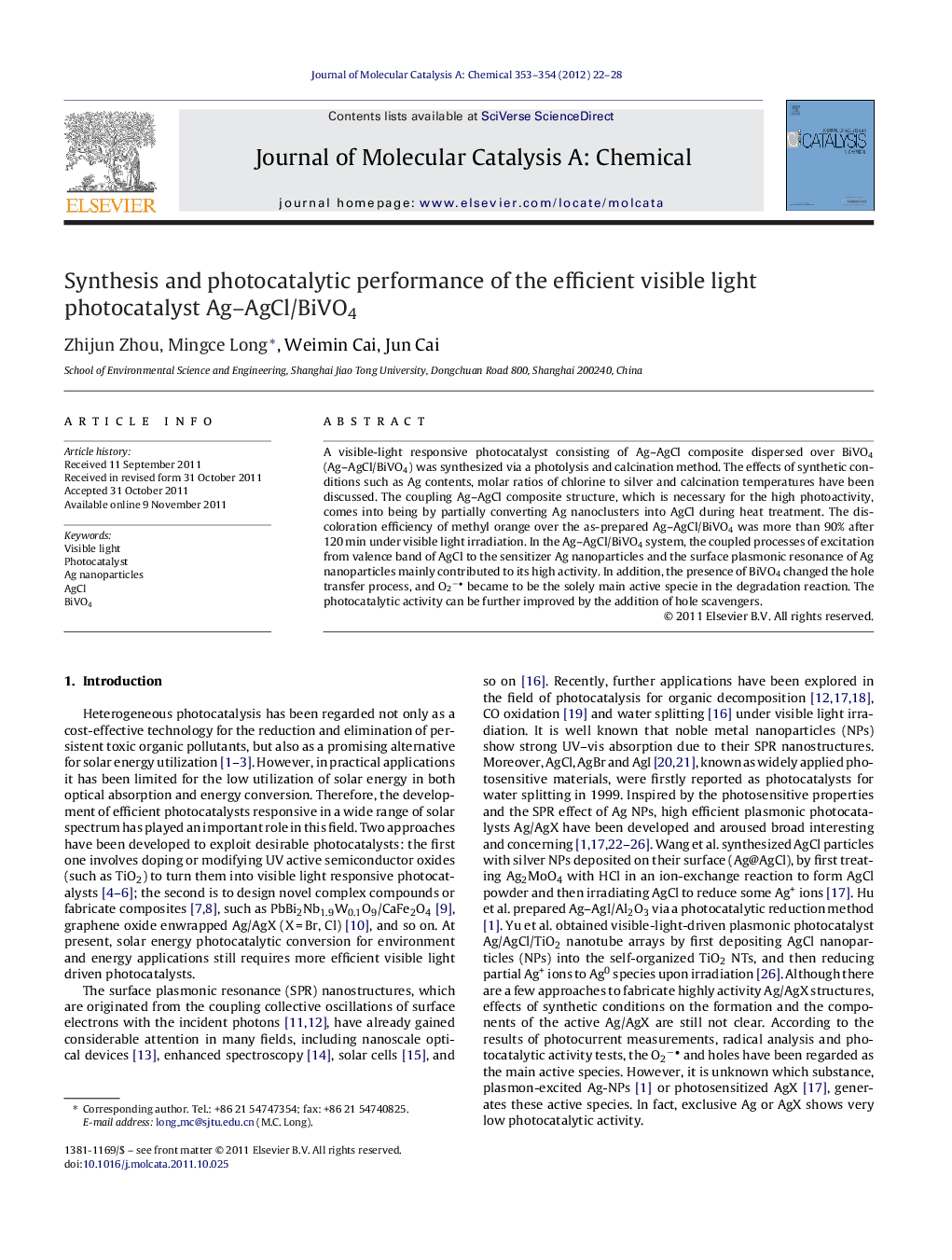| Article ID | Journal | Published Year | Pages | File Type |
|---|---|---|---|---|
| 66214 | Journal of Molecular Catalysis A: Chemical | 2012 | 7 Pages |
A visible-light responsive photocatalyst consisting of Ag–AgCl composite dispersed over BiVO4 (Ag–AgCl/BiVO4) was synthesized via a photolysis and calcination method. The effects of synthetic conditions such as Ag contents, molar ratios of chlorine to silver and calcination temperatures have been discussed. The coupling Ag–AgCl composite structure, which is necessary for the high photoactivity, comes into being by partially converting Ag nanoclusters into AgCl during heat treatment. The discoloration efficiency of methyl orange over the as-prepared Ag–AgCl/BiVO4 was more than 90% after 120 min under visible light irradiation. In the Ag–AgCl/BiVO4 system, the coupled processes of excitation from valence band of AgCl to the sensitizer Ag nanoparticles and the surface plasmonic resonance of Ag nanoparticles mainly contributed to its high activity. In addition, the presence of BiVO4 changed the hole transfer process, and O2− became to be the solely main active specie in the degradation reaction. The photocatalytic activity can be further improved by the addition of hole scavengers.
Graphical abstractFigure optionsDownload full-size imageDownload high-quality image (171 K)Download as PowerPoint slideHighlights► A photocatalyst composite Ag–AgCl/BiVO4 was synthesized via a photolysis–calcination method. ► Ag nanoclusters partially convert into AgCl to form the efficient Ag–AgCl photocatalyst. ► Photogenerated holes transfer to the valence band of BiVO4 and O2−·becomes the main active specie.
